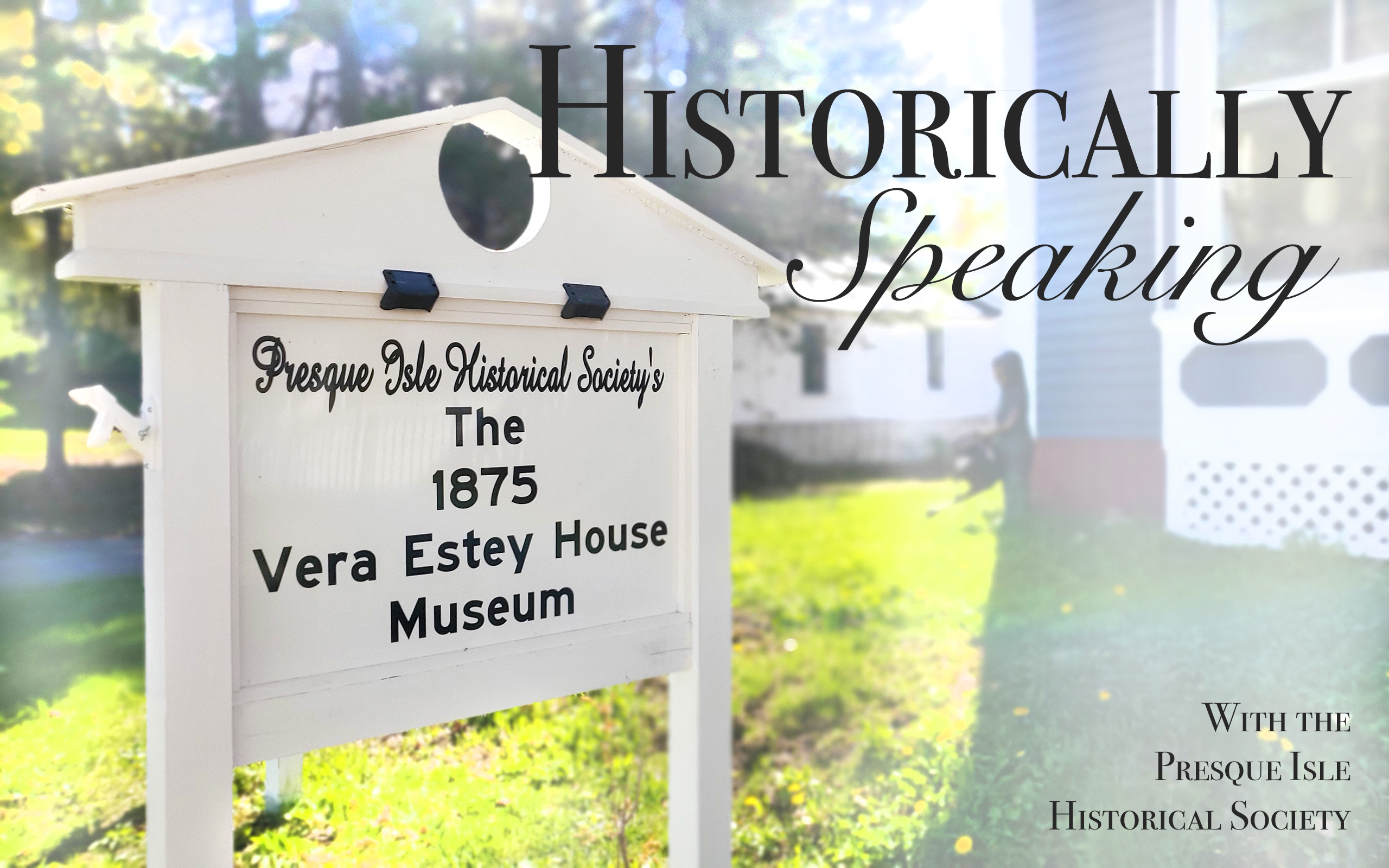According to an 1895 local newspaper article, “No full write-up of Aroostook County would be complete without some mention of the late John Allen. He came from Franklin County to Aroostook in 1839. His first venture was to purchase the squatter’s right to an island in the Aroostook River, just above where the Presque Isle bridge now stands. Afterwards he took up a State lot of wild land in Maysville, and here he made one of the best farms in the county.”
John Allen was the son of John Allen, and was descended from one of the oldest families in New England. He was born on Dec. 10, 1800, in New Sharon, Maine. Allen taught school for a number of years as a young man and then became a merchant.
Upon his arrival in Maysville in 1839, he worked as a miller, a farmer, a lumberman and a merchant. He became the wealthiest man in town.
Incidentally, the island purchased by Allen can be found on the 1877 Roe & Colby Atlas map, was the island on which the first white baby in our area was born — Catherine Armstrong — who later married James Ashby.
In 1880, the lot on the northeast corner of State and Second streets was purchased from John Allen for $400 for the purpose of building a church building for the Free Baptists (now the State Street Baptist Church). The building was erected that year by Frank and Aubrey Smith with the exception of the steeple, bell and clock. John allen purchased the clock for the church.
In 1865, the Town of Maysville built a new schoolhouse on what is now the corner of the Caribou and Brewer roads, now the site of the Maysville Museum. When the schoolhouse was originally built, it was a two-story wooden structure with a large attic. The Maysville Grange 153 was officially established on April 10, 1875. That same year, the building also began serving as the grange hall. John Allen was one of the original members of Grange 153.
Allen kept a detailed diary, which is currently in the collections of Presque Isle Historical Society. The diary is dated Nov. 1, 1835, to Jan. 31, 1854, and is 73 pages in length. It contains information such as to whom he loaned money, when, for how long and how much; records of family births and deaths; the weather; and when, what and how much he planted or harvested each year.
Some of the other interesting things included in the diary were the incorporation of the Northern Maine Fair in 1850, of which he later served as pPresident for several terms, early snows, a lunar eclipse, and grafting plants.
As his health started declining, Allen moved to California in 1879, where he joined his son, Benjamin, who had relocated there a few years earlier also due to declining health. It is said that he planted the first orange grove in Riverside, California.
There is some dispute as to where Allen actually resided upon his passing. This is partially due to the issuance of a Maine death certificate. He did, however, pass away in California.
Kimberly R. Smith is the secretary/treasurer of the Presque Isle Historical Society.








